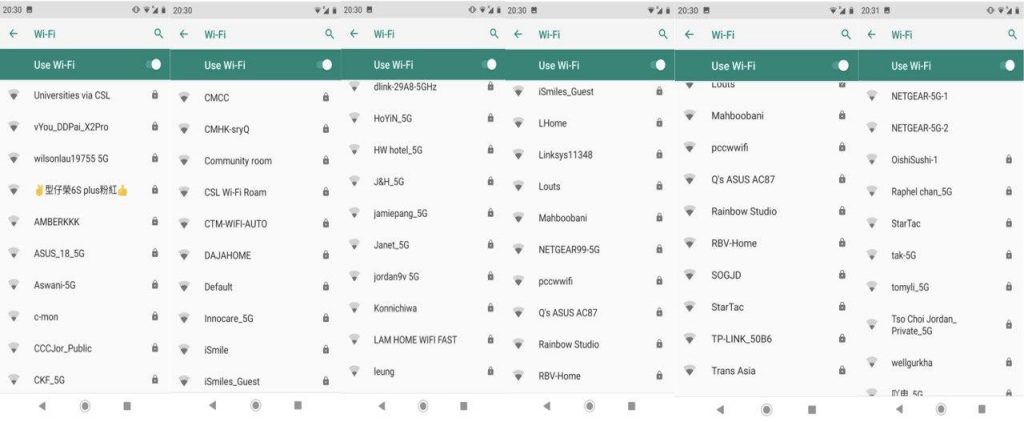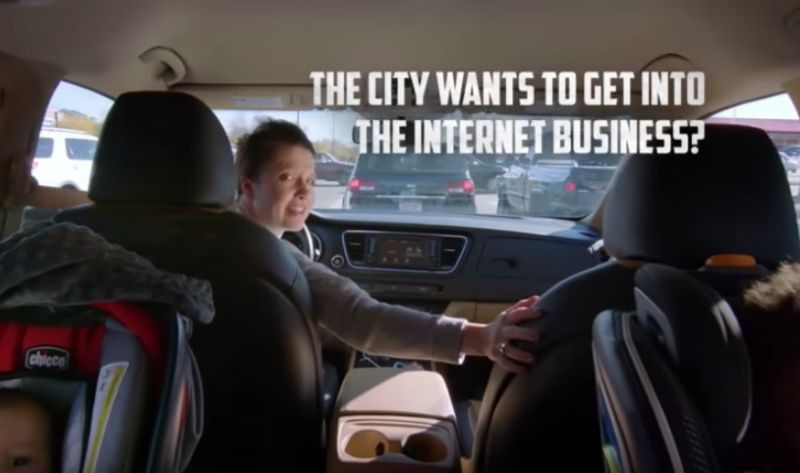While writing in confinement from my flat in Italy, the coronavirus (COVID-19) crisis has exploded in all its dramatic social, economic and political violence. What has been absolutely clear is that this crisis does not concern only public health, rather it reveals much deeper societal issues and will have long lasting effects on every sector and social group. In addition, the pandemic appears more and more as an urban crisis (of mobility, density, service provision and social organisation), intertwining deeply with ‘smart’ technologies and the discourses and solutions usually attached to these. Here, I want to put to the fore a few conceptual considerations on the role municipalities can pursue in the ‘digital society’ springing from this crisis.
As a consequence of the high rate of contagion, the Italian government, followed by many other countries around the world, moved to “lockdown” the entire population at home. As a consequence, social media, teleworking, online courses, chats with tutors (or similar) are becoming, slowly and patchily, the ‘new normal’ of these troubled days.
The Italian government has launched the “solidarietà digitale” initiative, through which hundreds of private tech companies are offering services and discounts on their digital products, such as: extra gigabytes of home entertainment, free online access to magazines and ebooks, discounted server storage, free certified email addresses, and of course a wealth of distance learning facilitations such as online training, digital platforms and solutions for teleworking and distance conferencing. In many countries, quasi-monopolist markets in the Internet and communication industry have been asked to relax their data cap policies and waive long-distance and overage fees, making it clear that these have never been dictated by technical issues related to excessive traffic, but rather to a regime of scarcity that capitalism is so good at fabricating. For instance, Free Press called for Internet Services Providers to play their part: “Especially during a crisis, Internet and phone access should be accessible public services like water and electricity.”
One of the pillars of the post-covid society, as this is imagined through political discourses and unusual public spending, is the building of a strong ‘digital society’. But, on whose terms? How will the digitalisation process of the everyday impact on the Internet and data infrastructure – its access, governance, and democratisation – in other words, on the ‘right to the smart city’? The main tenet underlying this brief conceptual piece is the support for the Internet of People (IoP) for ‘the many’, rather than the Internet of Things (IoT) for the few. In particular, what follows are a few conceptual considerations on the role municipalities can pursue in the ‘digital society’ which is springing from this global emergency.
First, the ‘digital solidarity’ campaign has made clear that digital infrastructures are a pressing need in many fields: online working, leisure and communication activities are an increasing demand on current lifestyles. Although exceptional, the present situation will have a booming effect on the digital sector and online business, forcing digital practices on people and institutions that have thus far resisted this change. In the present scenario of a growing demand for digital connectivity from people to ‘things’ – and the looming pandemic underscored this point massively – the overburdened capacity of the networks will either need to be increased and expanded, or capped and slowed down further.

Screenshot from the author’s phone showing some of the private wi-fi connections available in Jordan, Hong-Kong (2019)
Second, the persistent ‘digital divide’ has turned the technological ‘experiment’ into a social issue: in the US, for instance, approximately 22% of households don’t have Internet at home, including more than 4m households with school-age children, whilst 8% of households who have the Internet rely exclusively on mobile broadband, something which is increasingly manifesting as a racial digital divide. As distance learning and remote work become the ‘new normal’ for millions of people, we need instead to ensure that access to high-quality broadband is affordable, equitable and widely available.
It follows that, third, such an infrastructure cannot be left to private and unregulated providers, as it is at the present almost everywhere, but rather should be organised and delivered by municipalities as a public service for the common good. This alone is not going to challenge the many issues of digital capitalism: a whole set of services, platforms, data centres, clouds, and infrastructure governance would need to become regulated and/or brought into public hands, whether by the state (for larger infrastructure build, such as the ‘backbone’) or municipalities (for the ‘last mile’ delivery and local governance). However, a municipal and public Internet and data infrastructure may provide a gateway to increased local control and accountability.

Comcast advertisement against municipal broadband in Fort Collins, Colorado (2017)
Fourth, it seems to me that digital capitalism is responding to the crisis with a vested interest that leaves unresolved the pressing needs of a population forced to stay ‘at home’. With the window-dressing effects of such measures likely to generate more profits in the long run for these digital giants (more customers, more metadata and personal data, more public funds), such a solidarity campaign looks more akin to a marketing campaign hidden behind a humanitarian face. The same institutions promoting the digital solidarity campaign have been quick to warn against scammers or hoaxes, and poor services hiding marketing messages. For instance, Google has been under fire by US Senators for continually providing ads on masks and hand sanitisers to users searching “coronavirus” and similar items, also engaging in “price gauging”.
Thus, a progressive ‘right to the smart city’ needs to take into account the data and communication infrastructure becoming central to people’s lives. If we are to consider equality and fairness as driving principles of digital societies, universal (and possibly free) access to this infrastructure ought to become a priority. I would argue that an ‘intelligent city’ (‘intelligent’ is here posed as a complementary term to ‘smart’) can only work with regard to the digital and material needs of people in the context of globalised economies and localised solutions. Since Big Tech’s good corporate social responsibility has been slow to act and has rather shown to pursue opportunistic ventures, we would need to look elsewhere in order to seek the public interest and the common good in the ‘digital society’ of the near-future. Conversely, community-owned Internet provision has historically fallen back, with ethical hackers being co-opted into problem-solving apps and overcomplicated crypto-ledger solutions.
Communitarian response and the ‘public’
It is at the city scale that the Commune comes to life. As David Harvey told us in The Future of the Commons, “individuals and social groups create the social world of the city and, in doing so, create something common as a framework within which we all can dwell”. Cities have a lot to learn and gain from nurturing urban commons – the spaces of solidarity, social reproduction and mutual help – through cooperatives for public service provision and collectives of people pursuing goals other than the private profit. Here, there is room for a municipalist policy to become the policy of the commons. For instance, common-focused institutions would maintain “trust on trustless networks” (Schneider, 2018), fostering transparent governance. This has been exceptionally lacking in networked and digital societies after decades of neoliberal governance at distance, marketisation of public services, individualisation of social responsibility, exasperate nudging behaviour, and overarching algorithmic control and surveillance.
Henry Lefebvre suggests that urban space is the “work of art” of its users: it is appropriated by the everyday practices of the people who inhabit it. Thus, commoning – the contested daily practice of producing, maintaining, and defending a commons – happens in the localities of the everyday, the spaces of inhabitation and social reproduction. Indeed, cities are at the centre of solidarity networks and commoning practices. According to Amanda Huron, the city is, in fact, the most complex form of human organisation which manifests itself as a commons to the extent that favours “collective work, among strangers, to govern non-commodified resources in spaces saturated with people, conflicting uses, and capitalist investment”. However, solidarity and ethics of care, not unlike the virus, feed on human contacts, face-to-face understanding and long-term trust building: practising solidarity when you have to practice ‘social distance’ can therefore sound like an oxymoron. What are the cities of the future going to be like after the pandemic and what commoning practices will look like? Are solidarity and commons going to appear prevalently in a digital form?

Open Wireless Network drop-in training, Deptford London (2016 c.a.). Photo: Paolo Cardullo.
Evidence thus far suggests that power – in the form of social infrastructuring, solidarity networks, commoning practices and new forms of protest, contestation and socialisation of political struggles, but also cash transfers with redistributive effects in the forms of Universal Basic Income, and finally re-jiggling of public space in favour of leisure time and pedestrians – has migrated not just from private money to the state, but from both market and state to the commons. Amid difficulties and lockdown directives, we are witnessing growing protests and political activism through social movements, but also mutual aid commoning and solidarity response from civil society, associations, volunteering sectors, and normal people. The pandemic seems to have accelerated the process of social recomposition between social movements and the commons, thus responding to the aggravated conditions of social reproduction and inequalities which have been perpetrating at least since the financial crisis (see De Angelis & Mattern’s recent interventions).
In my hometown, for instance, there has been an increasing number of food banks distributing emergency items including baby food and toiletries, and a myriad of other neighbourhood lines of help such as volunteers beginning to deliver necessities to people at home. The service was first initiated by a community group, before being coordinated by the city’s Social Services. The city responded to people’s needs and took on board the commoning side of this social infrastructure, allying with volunteers, supermarkets, and private donors. Servicing those most in need and supporting communitarian chains of solidarity seem to have become, again, a public concern, which deserves a public response. Indeed, the Italian government made a substantial (although insufficient) transfer of cash to cities, recognising the crucial role of municipalities in handling this unprecedented crisis, and thus (temporarily?) inverting the neoliberal policy of austerity cuts to public services and privatisations.
An alliance between city and the commons, rather than the market, can start removing some of the barriers to the Internet of People. Rather than an heroic immersion in the back alleys of cybernetics – focusing on protocol exchange, encryption, and blockchain – a pragmatic approach to commons in the ‘smart city’ is required. A mixed approach in the provision of the Internet would entail: grass-roots initiatives (in the forms of co-operatives, citizen groups, and social enterprises such as small and ethical ISPs), sharing of networks and licence spectrum (this a commons too, rather than a commodity), public engagement from the city (as an organization with social and political goals), and an adequate level of public investments (based on rights rather than ‘market failure’). A municipal Internet and data infrastructure would be stretching out geographical scales, from regional or federal levels of backbone provision to the neighbourhood-focused ‘last mile’ provision. By developing, maintaining or controlling their own Internet grid, cities can negotiate more favourable and ethically binding access for their citizens, for instance by leveraging their contractual weight towards private digital providers and platforms. A public Internet grid would allow municipalities, or their alliances, to have more negotiating power towards global digital platforms – for instance, when setting new urban policies, standards, and regulations to transnational companies such as Airbnb or Uber – and to foster ethical procurement towards tech providers. Social movements and interest groups would set standards of data ownership and ethics of data extraction, treatment, and reuse – perhaps with their own manifesto, audits, and feedback loops.

Wi-Fi community build, Open Wireless Network, Deptford London (2013, circa). Photo: James Stevens.
The current crisis is a good time for ditching neoliberal urbanism, ending the competitive push of cities against each other, and providing useful services for all. In an ‘intelligent city’, governing bodies and social movements would deliver their municipally-owned Internet infrastructure that works for the common good. We ought to steer our cities away from the Internet of Things and from mobile apps that turn citizens into sensors, as being currently promoted by technocratic elites through the advocacy offered by Big Tech coalitions and communities of geeks. Rather, it is time to move towards a useful, fair and empowering Internet of People: a critical urban infrastructure, like electricity or transport, and one that makes the ‘right to the smart city’ operative.
Photo: Markus Spiske

